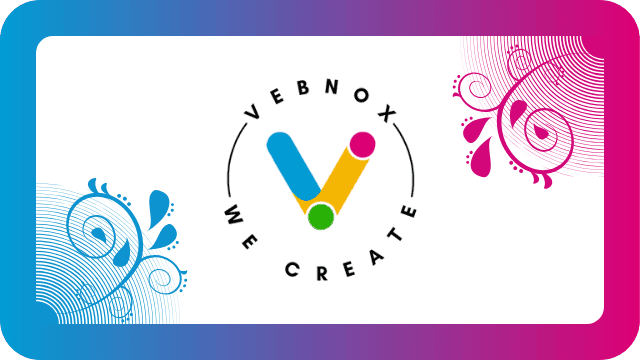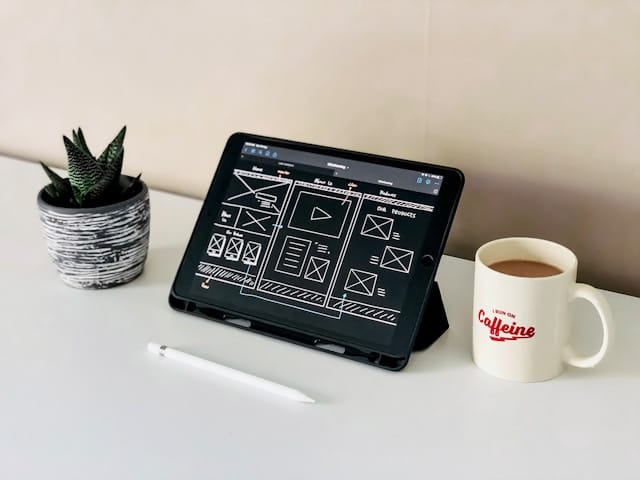Creative Web Design: Enhancing User Experience for a Lasting Impact
Table of Contents
Introduction to Creative Web Design
In today’s digital landscape, creative web design plays a pivotal role in shaping the first impression of a brand. As businesses increasingly transition to online platforms, the demand for innovative and visually striking design solutions has surged. A well-executed creative web design not only captivates user attention but also communicates a brand’s identity effectively. It involves a blend of aesthetics and functionality that engages users while ensuring ease of navigation and interaction.
At its core, creative web design is more than just an attractive layout; it encompasses strategic planning and execution that prioritize user experience (UX). This approach focuses on how users interact with a website, emphasizing the plethora of website design services dedicated to optimizing usability. For example, responsive web design is crucial in today’s multi-device environment, allowing businesses to connect with their audiences seamlessly across various platforms, be it smartphones or tablets. As a result, mobile-friendly websites have become a necessity rather than an option.
Elevating user experience involves the implementation of compelling visual design elements, such as user interface design and interactive design features. These elements are crafted to guide users through a decisive journey on the site, enriching their overall interaction and enhancing website user engagement. Furthermore, collaborating with a creative design agency can provide businesses with custom web solutions tailored to their unique needs. With professional web design, the integration of SEO web design principles ensures that a brand remains visible in competitive online marketplaces.
Ultimately, the significance of aligning creative web design with user experience cannot be overstated. As businesses aim for growth in a digital realm, understanding how to leverage web design for business can lead to higher conversion rates and customer loyalty. Embracing modern web design strategies sets the foundation for a strong online presence, making it imperative for brands to invest in high-quality website development agency services.
Key Elements of Creative Web Design
Creative web design encompasses a multitude of elements that come together to create an engaging and functional digital experience. Among these, color schemes play a pivotal role; they not only affect the visual appeal of a website but also influence user emotions and perceptions. By selecting a harmonious color palette that reflects the brand identity, designers can significantly enhance user engagement and promote a cohesive visual language throughout the site.
Typography is another essential component of website design services. The choice of fonts, sizes, and styles contributes to readability and overall aesthetics. Modern web design encourages the use of clean, easy-to-read typography, ensuring that visitors can digest information quickly and efficiently. Combining different font styles while maintaining a clear hierarchy can help guide users through the content, facilitating a positive user experience.
Imagery is equally important in creative web design. High-quality images, illustrations, or videos can create a strong visual impact, drawing users’ attention and enhancing the storytelling aspect of the website. When these visual elements are used strategically, they contribute to the overall user interface design and evoke the desired emotions, thereby increasing user retention.
The layout of a website serves as the backbone of its design. A well-structured layout fosters intuitive navigation and helps users quickly find information, which is crucial for mobile-friendly websites. Employing a responsive web design approach ensures that the website adapts to various screen sizes, further enhancing user engagement across different devices.
Lastly, navigation is fundamental in guiding users through the site. A clear and concise navigation structure allows visitors to access essential information with minimal effort, thereby promoting interaction and satisfaction. By focusing on these key elements—color schemes, typography, imagery, layout, and navigation—creative design agencies can create custom web solutions that elevate user experience and engagement.
Understanding User Experience (UX) Design
User Experience (UX) design is a fundamental aspect of modern web design that focuses on creating user-friendly websites tailored to meet the needs and preferences of visitors. At its core, UX design emphasizes usability, accessibility, and a user-centered approach, ensuring that the interaction between users and digital platforms is seamless and enjoyable. This is particularly vital in a landscape where mobile-friendly websites and responsive web design are no longer optional but necessary for a successful online presence.
The principles of UX design revolve around several key elements that contribute to the overall functionality of a website. Firstly, usability ensures that users can navigate a site effortlessly, finding the information they seek without unnecessary complications. This aspect of website design services encompasses various factors, including layout, navigation menus, and the clarity of calls to action.
Accessibility is another critical principle in UX design, as it ensures that all users, including those with disabilities, can interact with a website effectively. A creative design agency prioritizes accessibility by implementing features such as text alternatives for images, keyboard navigation options, and color contrast considerations. These measures not only comply with legal standards but also enhance user engagement and satisfaction.
Furthermore, adopting a user-centered approach is essential for understanding the specific needs of users. Engaging in thorough research and employing tools like user personas and journey maps allows web design experts to pinpoint the expectations of different user groups. This tailored approach leads to customized web solutions that resonate with target audiences, and ultimately, fosters a positive user experience.
In conclusion, effective web design plays a pivotal role in enhancing overall user satisfaction. By focusing on usability, accessibility, and user-centered methods, businesses can increase repeat visits and build lasting relationships with their audience. A commitment to creative and interactive design not only elevates a website’s aesthetic appeal but also reinforces its functionality, contributing to a comprehensive web design strategy.
The Role of Responsive Design in User Experience
In the rapidly evolving digital landscape, responsive design has become a pivotal element in enhancing user experience. This web design approach ensures that a website adjusts seamlessly across a variety of devices, including desktops, tablets, and mobile phones. With the increasing prevalence of mobile usage, incorporating responsive web design is essential for any business looking to maintain a functional and appealing online presence. Responsive design not only optimizes website performance but also significantly contributes to user engagement.
A well-executed responsive design allows for consistent accessibility, ensuring that users can navigate and interact with a business website design regardless of the device they use. The advantages of responsive web design extend beyond just aesthetics; it facilitates improved usability by ensuring that all elements of a site, such as text, images, and navigation menus, are appropriately scaled for different screen sizes. This adaptability leads to a more enjoyable user experience, ultimately resulting in increased engagement and reduced bounce rates.
Moreover, implementing responsive design practices is a cornerstone of modern SEO web design. Search engines like Google prioritize mobile-friendly websites in their rankings, as they are better equipped to deliver content that meets user needs on various devices. Therefore, businesses that invest in responsive web design not only enhance user experience but also boost their visibility in search engine results. The integration of user-friendly websites into a broader strategy that includes professional web design and website optimization can greatly influence a brand’s online success.
In a world where users expect instant access to information, responsive web design represents not just an aesthetic choice but a fundamental requirement for effective online communication. By adapting to the needs of users, businesses can leverage creative web design and web design for small businesses to create memorable and impactful user experiences that resonate with their audience.
Incorporating Visual Storytelling in Web Design
Visual storytelling has emerged as a pivotal aspect of creative web design, providing a unique means to engage users on an emotional level. It transcends traditional content delivery by integrating narratives that resonate with the audience, effectively enhancing user experience. By weaving stories into design elements, businesses can foster deeper connections and ensure their message is memorable.
One of the fundamental techniques for incorporating visual storytelling is through the use of high-quality images that reflect a brand’s ethos and mission. For instance, a creative design agency might utilize compelling visuals that showcase their portfolio of successful projects, thus establishing credibility and trust. Similarly, videos can succinctly convey complex ideas or narratives, which can be particularly beneficial in web design for business. A well-crafted video explaining services offered reinforces user engagement, making the website more inviting and dynamic.
An equally important element is the use of animations. Effective animations can guide users through a site, illustrating workflows or highlighting critical features of custom web solutions. Such interactive design elements not only add visual appeal but also enhance the overall user experience by leading visitors naturally from one point to the next. Additionally, incorporating infographics helps break down data into digestible formats, which is essential for professional web design aimed at optimizing user interface design.
Responsive web design also plays a key role in visual storytelling. A seamlessly adaptable website ensures that narratives are conveyed effectively across various devices, including mobile-friendly websites. Ultimately, creative web design that employs visual storytelling can significantly improve website user engagement, leaving a lasting impact on visitors. By prioritizing users’ needs and preferences, designers can transform a standard business website design into a captivating story that encourages interaction and retention.
Utilizing Interactive Design for Engagement
Interactive design plays a crucial role in creating engaging web experiences that resonate with users. By integrating various interactive elements, such as hover effects, animations, and user-driven content, businesses can significantly enhance user experience on their platforms. These features not only create a visually appealing aesthetic but also facilitate a connection between the user and the content, resulting in improved website user engagement.
Hover effects, for example, can transform static elements into dynamic ones, encouraging users to explore further. This simplicity in interaction makes websites more user-friendly, allowing for a seamless exploration of services or products. When paired with professional web design techniques, hover effects help guide users through critical content, leading to higher conversion rates. Additionally, nuanced animations can capture attention effectively, drawing users to important calls to action or key messages within the website design.
Another vital aspect of interactive design is user-driven content, which invites users to participate actively rather than passively consume information. Incorporating features such as sliders, polls, or even live chats can create a sense of involvement, thereby enhancing the overall user experience. These interactive components can lead to fruitful dialogues between users and businesses, fostering a community around the brand and its offerings. Moreover, they can provide valuable insights into user preferences, further informing web design for small businesses.
Ultimately, the implementation of interactive elements requires a balanced approach, ensuring that the website is not only visually appealing but also functional. Engaging users through interactive design can transform standard website development into a captivating journey, aligning with the goals of modern web design. By focusing on enhancing interactivity through custom web solutions, brands can better engage their audience while achieving a lasting impact on their business objectives.
Design Trends Shaping User Experience
In the ever-evolving realm of creative web design, several key trends are currently influencing user experience and shaping the expectations for modern websites. These design trends not only respond to user preferences but also play a crucial role in enhancing user engagement and satisfaction.
One significant trend is minimalism, which emphasizes simplicity, clarity, and purpose. By reducing visual clutter and focusing on essential elements, minimalistic design fosters a user-friendly atmosphere, allowing visitors to navigate without distractions. This approach aligns with user expectations for a streamlined experience, as it enables quicker information access and enhances overall usability.
Another notable trend is the use of bold typography. As part of responsive web design, large and impactful fonts command attention and convey messages effectively. This not only aids in visual hierarchy but also aligns with the growing emphasis on branding, as distinctive typography can become a signature element of a business website design.
Dark mode has gained significant traction across various platforms, providing a visually striking option that can enhance user experience, particularly in low-light environments. This design choice can reduce eye strain and offer a modern aesthetic, thereby improving overall user satisfaction with mobile-friendly websites.
Microinteractions, or small animations that respond to user actions, are also reshaping ux/ui design. These subtle cues not only provide immediate feedback but also guide users through their interactions with interactive design elements. By making tasks feel more engaging, businesses can effectively enhance user interface design and boost website user engagement.
As new design trends emerge, the importance of website optimization becomes apparent. By integrating these trends within their web design for small businesses, creative design agencies can offer custom web solutions that cater to modern expectations while ensuring user experience remains a top priority.
Best Practices for Creative Web Design
When embarking on the journey of creative web design, it is essential to implement certain best practices that prioritize user experience. A well-designed website should not only attract visitors but also retain them, fostering a positive interaction with your brand. Here are crucial strategies that can significantly enhance user experience.
First and foremost, optimizing load times is vital. Contemporary users have little patience for slow-loading websites; therefore, employing techniques such as image compression and minimalistic coding practices can be game-changers. Fast loading not only improves user satisfaction but also benefits SEO web design, bolstering your site’s search engine ranking.
In today’s mobile-centric world, ensuring mobile compatibility is paramount. Responsive web design allows your website to adapt seamlessly to various screen sizes, providing an equally engaging experience for mobile users. This aspect is critical, especially for businesses catering to a mobile audience through their business website design.
Additionally, the use of high-quality visuals is imperative in establishing an appealing interface. Custom web solutions often employ professional visuals, as they contribute to the visual design of the site and enhance brand credibility. Clear, high-resolution images create a more immersive user experience and can significantly improve website user engagement.
Simplifying navigation is another key practice. User-friendly websites enable visitors to find the information they need quickly and efficiently. Utilizing intuitive menus, breadcrumb trails, and a well-structured layout will guide users through your site, reducing frustration and encouraging exploration.
Incorporating these best practices not only enhances user experience but also positions a web design agency as a leader in the competitive landscape of website development. By focusing on the needs and preferences of the users, businesses can create interactive designs that resonate and leave a lasting impact.
Measuring the Impact of Design on User Experience
Assessing the effectiveness of creative web design is essential for understanding its impact on user experience. A variety of tools and analytics methods can be utilized to evaluate how design choices influence user engagement, retention rates, and conversion metrics. The success of any website design services hinges on the ability to create a measure of its efficacy in meeting user needs.
One proven method for measuring user engagement is through the use of web analytics platforms, such as Google Analytics. Utilizing metrics like bounce rate, session duration, and pages per session provides insights into how users interact with a site. A high bounce rate could indicate that the responsive web design does not resonate with visitors, while longer session durations may suggest that the user-friendly websites offer valuable content that captures attention. These metrics can help designers make informed decisions in crafting interactive design elements that enhance the user experience.
Retention rates also serve as a crucial metric to gauge the effectiveness of ux/ui design. Tools like heatmaps can visually represent user interactions on a webpage, revealing which areas attract attention and fostering insights into user behavior. By analyzing where users tend to click more frequently, a creative design agency can optimize layouts and ensure the most critical elements are engaging and easily accessible.
Moreover, conversion metrics are vital for determining the success of website design for business. Tracking the number of desired actions taken by users—such as signing up for newsletters, making purchases, or filling out contact forms—provides concrete evidence of a website’s efficacy. Incorporating professional web design principles into the development of mobile-friendly websites can lead to improved conversion rates and overall success.
Utilizing A/B testing further complements these methods, enabling design experts to compare variations of website elements to determine which versions yield better engagement. Ultimately, these analytics serve to enhance website optimization, allowing businesses to refine their creative web design strategies effectively and create custom web solutions tailored to their audience’s preferences.






Comments are closed